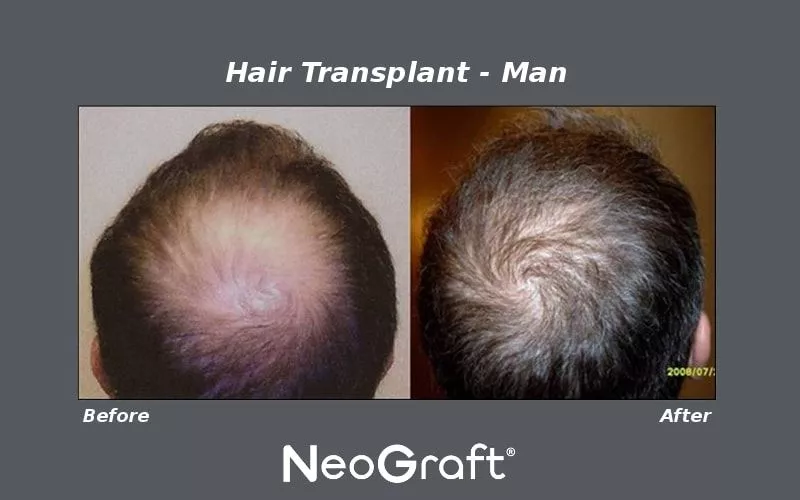Before we go over the differences between the ARTAS hair transplant system and the NeoGraft hair restoration process, let’s take a look at what these two have in common.
Both ARTAS and NeoGraft are what are known as Follicular Unit Extractors (FUE). Follicular Unit Extraction is one of the two primary hair transplantation methods currently employed by plastic surgeons.
In FUE, the surgeon obtains follicular units (naturally occurring groups of one to four hairs) from the “donor” area of the patient’s scalp. These groups of hairs are then transplanted into the target “recipient” part of the scalp; the part that needs more hair. ARTAS and NeoGraft both employ this type of minimally invasive hair restoration. Both of these machines have the advantage in that they help speed up the graft extraction process in the FUE technique.

NeoGraft hair transplantation for a man.
So, what ARTAS and NeoGraft hair transplants have in common is that they both use the minimally invasive, Follicular Unit Extraction (FUE) process. Although fairly new procedures in the industry, both have been proven to be very successful.
Differences Between NeoGraft and ARTAS Hair Transplant Processes
ARTAS is a robotic assisted device. With the ARTAS system, the machine digitally maps the donor area, analyzing the position of each natural grouping of hair. With the doctor’s guidance, the system harvests donor hair in a random fashion, so that the area retains its original appearance. The above process is repeated until the desired amount of hair is acquired. The grafts are then transplanted into the desired areas of the scalp, according to your physician’s design.
NeoGraft uses a manual hand-held system for harvesting and transplanting groups of follicles. The machine is partially automated; however, it is not a robotic system. The surgeon utilizes the computerized machine’s pneumatic controls to extract the hair groupings from the donor site. He then places them immediately into the target scalp area.
ARTAS uses what is called a blunt dissection technique. This extraction technique consists of a double punch arrangement with an inner punch and outer punch. The inner punch has cutting capabilities to score the uppermost part of the skin. The outer punch has a blunt edge used for dissection of the follicular units from the surrounding tissue in a way that is supposed to minimize injury to the grafts. An advantage of this system is the reduction in injury to the extracted follicle units.
NeoGraft utilizes the sharp punch method of extraction. With this system, a hand-held device is placed on the scalp. Here it separates the grafts from the surrounding donor tissue with a rotating sharp punch that is connected to a suction unit. Once the upper part of the graft is dissected by the punch, the suction pulls the graft out, separating it from the remaining tissue.
More Differences Between ARTAS and NeoGraft
ARTAS does not have an automated suction tube that carries the graft to a reservoir tank. The grafts are cut but left in place by the robot. The technician has to then manually remove each graft. This delay between cutting and actually removing the grafts can lead to drying of the grafts. NeoGraft, on the other hand, has an automated suction tube that carries the grafts to a reservoir as soon as they are cut where the grafts are kept hydrated with a saline solution.
Another difference is that, whereas the ARTAS system can only take grafts from the back of the head, the NeoGraft system (in the hands of an experienced surgeon) can be used to take grafts from anywhere, including the beard or the body.
Cost of ARTAS vs NeoGraft Hair Transplants
Generally, both the ARTAS and NeoGraft procedures are more costly than the strip technique. However, both have major advantages, including no scar to worry about and speedy, painless recovery.
The ARTAS robotic system is more expensive than the Neograft hair transplantation system due to the technology involved but doesn’t offer any additional options over the NeoGraft system.
Further Analysis of ARTAS and NeoGraft Procedures for Practical Application
A variety of factors need to be taken into account when deciding on whether to use ARTAS or NeoGraft or both in a practical surgical application. The decision will be made based on the patient’s individual case and its complexity, as well as the individual’s budget considerations.
If cost were no factor, and the case was a fairly straightforward man with hair loss, both ARTAS and NeoGraft are effective if in the hands of a trained plastic surgeon. If cost is an issue (which it usually is), the NeoGraft system is usually the more cost-effective choice.
ARTAS is not approved for use in women. NeoGraft is approved for both men and women.
Since ARTAS automatically detects and harvests hairs, it can’t “see” lighter colored hair and can’t extract thicker curly hair like in African American patients. Therefore, ARTAS is limited to straighter darker hair in men. NeoGraft is capable of harvesting any color hair, any type of hair and from any part of the head, face or even body in both men and women.
In more complex cases, the ARTAS technician might not have as much hands-on experience with hair grafting, so the result might not be as good as when the procedure is performed with NeoGraft by a surgeon who has more experience and a better feel for the aesthetics or art behind hair grafting.
Whether the ARTAS robotic technology is used or the NeoGraft hair restoration process is used, it’s essential to have a doctor with plenty of hands-on experience to ensure your hair restoration looks full and natural. This is especially true the more manual work is needed in addition to any robotic process.
Finding an Experienced Plastic Surgeon
Whether using the ARTAS or NeoGraft systems, “donor” hair harvesting is only one part of any hair transplant surgery. The other, is the experience, skill, and aesthetic eye of the surgeon in the design and grafting done into the recipient site. This is why it is so important to choose an experienced plastic surgeon, like Dr. Ganchi, for your hair restoration procedure.
Schedule a Consultation
In conclusion, both procedures have their pros and cons. This means anyone considering a hair transplant needs to consult an experienced plastic surgeon. Dr. Ganchi is such a surgeon. He will work with you to discover which procedure would be best to accomplish your goals (within your budget). Contact us to schedule your private consultation.
